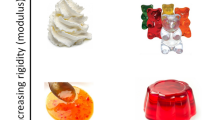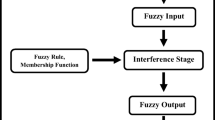Abstract
Automatic assessment of the quality of fruits and vegetables is a growing field of research in this modern era in order to enable faster processing of good quality foods. In this work, we have analyzed ten major colour variant features of two sets of oyster mushrooms in terms of histograms of each layer of the red–green–blue colourmap, hue-saturation-vital component colourmap, luminance-chrominance colourmap and the greyscale image. Besides, texture analysis has been carried out using entropy window filtering. Apart from that, five other minor features, such as mean, standard deviation, entropy, kurtosis and skewness of each of these layers, and four other greyscale features, such as contrast, correlation, energy and homogeneity are analyzed in this work. Two different freshness assessment models employing statistical methods like principal component analysis (PCA) and supervised learning algorithms such as artificial neural network (ANN) have been used here to investigate the different features of the mushroom images and classify the same into fresh and deteriorated classes. Analysis revealed that the ANN classifier outperforms the PCA threshold classifier with almost all the features. The highest classifier accuracy is obtained as 94.4% using the ANN model and 93.3% using the PCA threshold freshness detector. Most importantly, the use of smartphones ensures portability, as well as the possibility of widespread application of the proposed models.















Similar content being viewed by others
Data Availability
All the data used in the manuscript are available in the tables and figures.
Code Availability
Not applicable.
References
Adebo OA, Molelekoa T, Makhuvele R et al (2021) A review on novel non-thermal food processing techniques for mycotoxin reduction. Int J Food Sci Technol 56:13–27. https://doi.org/10.1111/ijfs.14734
Aguirre L, Frias JM, Barry-Ryan C, Grogan H (2009) Modelling browning and brown spotting of mushrooms (Agaricus bisporus) stored in controlled environmental conditions using image analysis. J Food Eng 91:280–286. https://doi.org/10.1016/j.jfoodeng.2008.09.004
Ali SSE, Dildar SA (2020) An efficient quality inspection of food products using neural network classification. J Intell Syst 29:1425–1440. https://doi.org/10.1515/jisys-2018-0077
Angerosa F, Di GL, Vito R, Cumitini S (1996) Sensory evaluation of virgin olive oils by artificial neural network processing of dynamic head-space gas chromatographic data. J Sci Food Agric 72:323–328. https://doi.org/10.1002/(SICI)1097-0010(199611)72:3%3c323::AID-JSFA662%3e3.0.CO;2-A
Anil A, Arora M (2018) Image processing based non-destructive testing of mushroom sample. In: 2018 Second International Conference on Electronics, Communication and Aerospace Technology (ICECA). pp 1625–1629
Azarmdel H, Jahanbakhshi A, Mohtasebi SS, Muñoz AR (2020) Evaluation of image processing technique as an expert system in mulberry fruit grading based on ripeness level using artificial neural networks (ANNs) and support vector machine (SVM). Postharvest Biol Technol 166:111201. https://doi.org/10.1016/j.postharvbio.2020.111201
Bhargava A, Bansal A (2020a) Machine learning based quality evaluation of mono-colored apples. Multimed Tools Appl 79:22989–23006. https://doi.org/10.1007/s11042-020-09036-9
Bhargava A, Bansal A (2021) Classification and grading of multiple varieties of apple fruit. Food Anal Methods. https://doi.org/10.1007/s12161-021-01970-0
Bhargava A, Bansal A (2020b) Automatic detection and grading of multiple fruits by machine learning. Food Anal Methods 13:751–761. https://doi.org/10.1007/s12161-019-01690-6
Binti Zaidi NI, Binti Lokman NAA, Bin Daud MR et al (2015) Fire recognition using RGB and YCbCr color space. ARPN J Eng Appl Sci 10:9786–9790
Caballero D, Pérez-Palacios T, Caro A et al (2017) Prediction of pork quality parameters by applying fractals and data mining on MRI. Food Res Int 99:739–747. https://doi.org/10.1016/j.foodres.2017.06.048
Dibaba T, Abera S (2017) Nutritional quality of Oyster mushroom (Pleurotus ostreatus) as affected by osmotic pretreatments and drying methods. Food Sci Nutr 5:989–996. https://doi.org/10.1002/fsn3.484
Dowlati M, Mohtasebi SS, Omid M et al (2013) Freshness assessment of gilthead sea bream (Sparus aurata) by machine vision based on gill and eye color changes. J Food Eng 119:277–287. https://doi.org/10.1016/j.jfoodeng.2013.05.023
Dutta Gupta S, Pattanayak AK (2017) Intelligent image analysis (IIA) using artificial neural network (ANN) for non-invasive estimation of chlorophyll content in micropropagated plants of potato. Vitr Cell Dev Biol - Plant 53:520–526. https://doi.org/10.1007/s11627-017-9825-6
Gabriëls SHEJ, Mishra P, Mensink MGJ et al (2020) Non-destructive measurement of internal browning in mangoes using visible and near-infrared spectroscopy supported by artificial neural network analysis. Postharvest Biol Technol 166:111206. https://doi.org/10.1016/j.postharvbio.2020.111206
Gago J, Landín M, Gallego P (2010) Strengths of artificial neural networks in modeling complex plant processes. Plant Signal Behav 5:743–745. https://doi.org/10.4161/psb.5.6.11702
Gowen AA, O’Donnell CP, Frias JM, Downey G (2009) Hyperspectral imaging for mushroom (agaricus bisporus) quality monitoring. In: 2009 First Workshop on Hyperspectral Image and Signal Processing: evolution in Remote Sensing. pp 1–4
Hazisawa T, Toda M, Sakoil T, et al. (2013) Image analysis method for grading raw shiitake mushrooms. In: The 19th Korea-Japan Joint Workshop on Frontiers of Computer Vision. pp 46–52
Hu J, Zhou C, Zhao D et al (2020) A rapid, low-cost deep learning system to classify squid species and evaluate freshness based on digital images. Fish Res 221:105376. https://doi.org/10.1016/j.fishres.2019.105376
Hussain A, Pu H, Sun D-W (2018) Innovative nondestructive imaging techniques for ripening and maturity of fruits – a review of recent applications. Trends Food Sci Technol 72:144–152. https://doi.org/10.1016/j.tifs.2017.12.010
Ismail S, Zainal AR, Mustapha A (2018) Behavioural features for mushroom classification. In: 2018 IEEE Symposium on Computer Applications & Industrial Electronics (ISCAIE). pp 412–415
Jahanbakhshi A, Momeny M, Mahmoudi M, Zhang Y-D (2020) Classification of sour lemons based on apparent defects using stochastic pooling mechanism in deep convolutional neural networks. Sci Hortic (amsterdam) 263:109133. https://doi.org/10.1016/j.scienta.2019.109133
Jolliffe I (2002) Principal component analysis, 2nd edn. Springer. https://doi.org/10.1007/b98835
Koyama K, Tanaka M, Cho B-H, et al. (2021) Predicting sensory evaluation of spinach freshness using machine learning model and digital images. PLoS One 16:e0248769
Kumar P, Kumar V, Goala M et al (2021) Integrated use of treated dairy wastewater and agro-residue for Agaricus bisporus mushroom cultivation: experimental and kinetics studies. Biocatal Agric Biotechnol 32:101940. https://doi.org/10.1016/j.bcab.2021.101940
Li H, Tian Y, Menolli N Jr et al (2021) Reviewing the world’s edible mushroom species: a new evidence-based classification system. Compr Rev Food Sci Food Saf 20:1982–2014. https://doi.org/10.1111/1541-4337.12708
Liu X, Jiang Y, Shen S et al (2015) Comparison of Arrhenius model and artificial neuronal network for the quality prediction of rainbow trout (Oncorhynchus mykiss) fillets during storage at different temperatures. LWT - Food Sci Technol 60:142–147. https://doi.org/10.1016/j.lwt.2014.09.030
Lorente D, Aleixos N, Gómez-Sanchis J et al (2013) Selection of optimal wavelength features for decay detection in citrus fruit using the ROC curve and neural networks. Food Bioprocess Technol 6:530–541. https://doi.org/10.1007/s11947-011-0737-x
Lu C-P, Liaw J-J (2020) A novel image measurement algorithm for common mushroom caps based on convolutional neural network. Comput Electron Agric 171:105336. https://doi.org/10.1016/j.compag.2020.105336
Lu C-P, Liaw J-J, Wu T-C, Hung T-F (2019) Development of a mushroom growth measurement system applying deep learning for image recognition. Agron 9(1):32. https://doi.org/10.3390/agronomy9010032
Ma J, Sun D-W, Qu J-H et al (2016) Applications of computer vision for assessing quality of agri-food products: a review of recent research advances. Crit Rev Food Sci Nutr 56:113–127. https://doi.org/10.1080/10408398.2013.873885
de Machado T, A, Costa AG, Rodrigues RE, et al (2020) Quality of tomatoes under different transportation conditions by principal component analysis. Rev Ceres 67:448–453. https://doi.org/10.1590/0034-737x202067060004
Masoudian A, Mcisaac KA (2013) Application of support vector machine to detect microbial spoilage of mushrooms. In: 2013 International Conference on Computer and Robot Vision. pp 281–287
Mukherjee A, Chatterjee K, Sarkar T (2021) Entropy-aided assessment of Amla (Emblica officinalis) quality using principal component analysis. Biointerface Res Appl Chem 12(2):2162–2170. https://doi.org/10.33263/BRIAC122.21622170
Mukherjee A, Sakar T, Chatterjee K (2021) Freshness assessment of Indian gooseberry (Phyllanthus emblica) using probabilistic neural network. J Biosyst Eng 46(3). https://doi.org/10.1007/s42853-021-00116-8
Nadim M, Ahmadifar H, Mashkinmojeh M, yamaghani MR (2019) Application of image processing techniques for quality control of mushroom TT -. gums-cjhr 4:72–75. https://doi.org/10.29252/cjhr.4.3.72
Navotas IC, Santos CN V, Balderrama EJM, et al. (2018) Fish identification and freshness classification through image processing using artificial neural network
Péneau S, Brockhoff PB, Escher F, Nuessli J (2007) A comprehensive approach to evaluate the freshness of strawberries and carrots. Postharvest Biol Technol 45:20–29. https://doi.org/10.1016/j.postharvbio.2007.02.001
Pourdarbani R, Sabzi S, Hernández-Hernández M et al (2020) Non-destructive estimation of total chlorophyll content of apple fruit based on color feature, spectral data and the most effective wavelengths using hybrid artificial neural network-imperialist competitive algorithm. Plants (basel, Switzerland) 9https://doi.org/10.3390/plants9111547
Preechasuk J, Chaowalit O, Pensiri F, Visutsak P (2019) Image analysis of mushroom types classification by convolution neural networks. In: Proceedings of the 2019 2nd Artificial Intelligence and Cloud Computing Conference. Association for Computing Machinery, New York, NY, USA, pp 82–88
Przybył K, Gawałek J, Koszela K (2020) Application of artificial neural network for the quality-based classification of spray-dried rhubarb juice powders. J Food Sci Technol. https://doi.org/10.1007/s13197-020-04537-9
Przybylak A, Boniecki P, Koszela K et al (2016) Estimation of intramuscular level of marbling among Whiteheaded Mutton Sheep lambs. J Food Eng 168:199–204. https://doi.org/10.1016/j.jfoodeng.2015.07.035
Qian Y, Jiacheng R, Pengbo W, et al. (2020) Real-time detection and localization using SSD method for oyster mushroom picking robot*. In: 2020 IEEE International Conference on Real-time Computing and Robotics (RCAR). pp 158–163
Rahmawati D, Ibadillah AF, Ulum M, Setiawan H (2018) Design of automatic harvest system monitoring for oyster mushroom using image processing BT - Proceedings of the International Conference on Science and Technology (ICST 2018). Atlantis Press, pp 143–147
Sanahuja S, Fédou M, Briesen H (2018) Classification of puffed snacks freshness based on crispiness-related mechanical and acoustical properties. J Food Eng 226:53–64. https://doi.org/10.1016/j.jfoodeng.2017.12.013
Sarkar T, Salauddin M, Hazra S, Chakraborty R (2020) Artificial neural network modelling approach of drying kinetics evolution for hot air oven, microwave, microwave convective and freeze dried pineapple. SN Appl Sci 2:1621. https://doi.org/10.1007/s42452-020-03455-x
Sarkar T, Mukherjee A, Chatterjee K (2021) Supervised learning aided multiple feature analysis for freshness class detection of Indian gooseberry (Phyllanthus emblica). J Inst Eng (India): A. https://doi.org/10.1007/s40030-021-00585-2
Suktanarak S, Teerachaichayut S (2017) Non-destructive quality assessment of hens’ eggs using hyperspectral images. J Food Eng 215:97–103. https://doi.org/10.1016/j.jfoodeng.2017.07.008
Sun Y, Wei K, Liu Q et al (2018) Classification and discrimination of different fungal diseases of three infection levels on peaches using hyperspectral reflectance imaging analysis. Sensors (basel) 18https://doi.org/10.3390/s18041295
Tan C, Sun F, Kong T, et al. (2018) A survey on deep transfer learning. In: In International conference on artificial neural networks. Springer, pp 270–279
Tarafdar A, Shahi NC, Singh A (2020) Color assessment of freeze-dried mushrooms using Photoshop and optimization with genetic algorithm. J Food Process Eng 43:e12920. https://doi.org/10.1111/jfpe.12920
Wada Y, Tsuzuki D, Kobayashi N et al (2007) Visual illusion in mass estimation of cut food. Appetite 49:183–190. https://doi.org/10.1016/j.appet.2007.01.009
Wang F, Zheng J, Tian X et al (2018) An automatic sorting system for fresh white button mushrooms based on image processing. Comput Electron Agric 151:416–425. https://doi.org/10.1016/j.compag.2018.06.022
Funding
Thanks to GAIN (Axencia Galega de Innovación) for supporting this review (grant number IN607A2019/01).
Author information
Authors and Affiliations
Corresponding authors
Ethics declarations
Ethics Approval
Not applicable.
Consent to Participate
All authors have given their full consent to participate.
Consent for Publication
All authors have given their full consent for publication.
Conflict of Interest
Tanmay Sarkar declares that he has no conflict of interest. Alok Mukherjee declares that he has no conflict of interest. Kingshuk Chatterjee declares that he has no conflict of interest. Mohammad Ali Shariati declares that he has no conflict of interest. Maksim Rebezov declares that he has no conflict of interest. Svetlana Rodionova declares that she has no conflict of interest. Denis Smirnov declares that he has no conflict of interest. Ruben Dominguez declares that he has no conflict of interest. Jose M. Lorenzo declares that he has no conflict of interest.
Additional information
Publisher's Note
Springer Nature remains neutral with regard to jurisdictional claims in published maps and institutional affiliations.
Rights and permissions
About this article
Cite this article
Sarkar, T., Mukherjee, A., Chatterjee, K. et al. Comparative Analysis of Statistical and Supervised Learning Models for Freshness Assessment of Oyster Mushrooms. Food Anal. Methods 15, 917–939 (2022). https://doi.org/10.1007/s12161-021-02161-7
Received:
Accepted:
Published:
Issue Date:
DOI: https://doi.org/10.1007/s12161-021-02161-7




